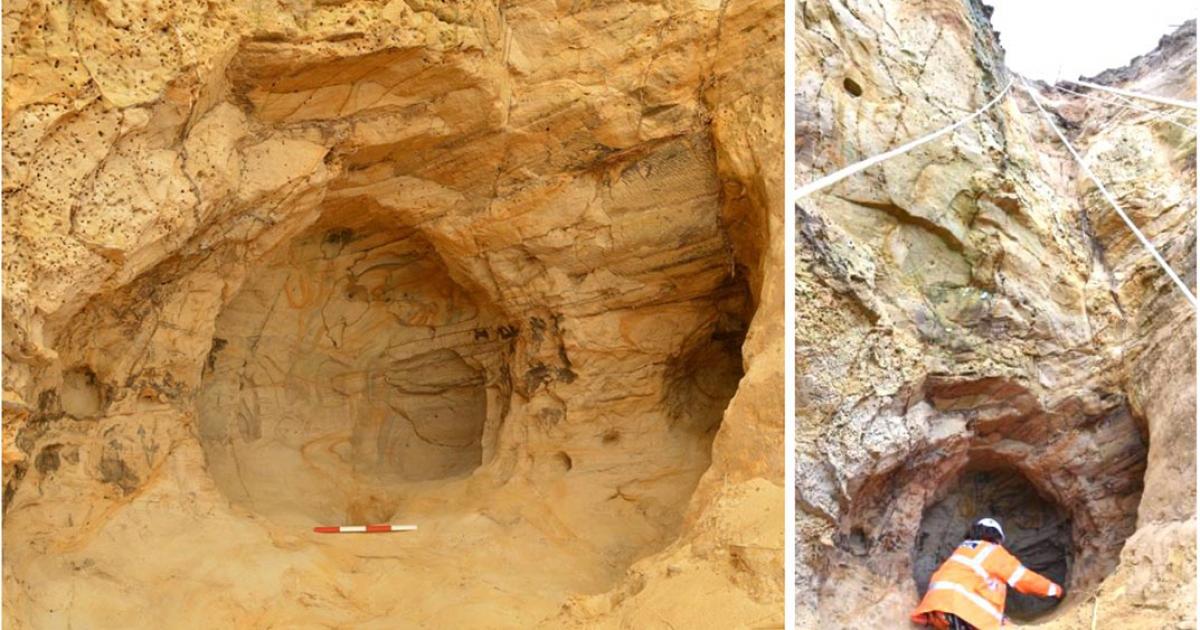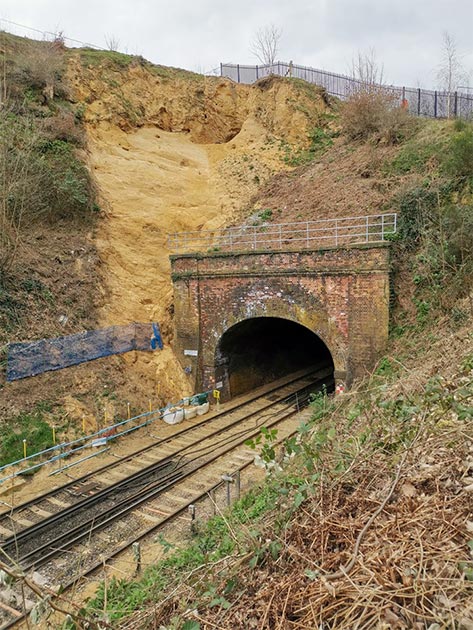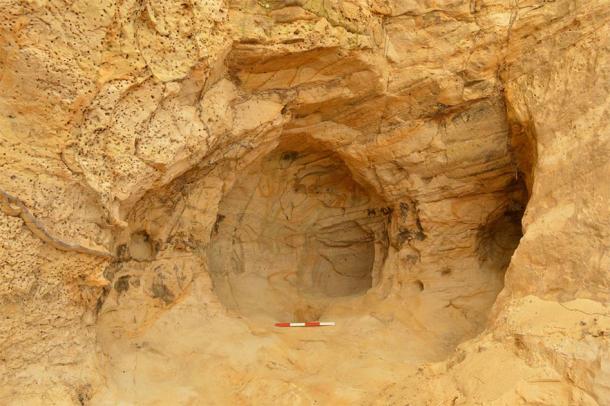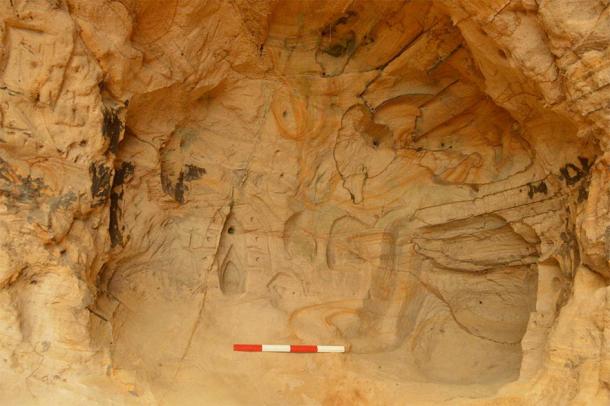
UK Landslide Unveils Cave Shrine Steeped in Medieval Religion
Railway engineers in Britain have made a remarkable discovery, uncovering a cave that may have been used as a shrine or hermitage in the Middle Ages. The cavern was uncovered after a landslide by the side of a railway line and is still somewhat unexplained, but it’s hoped that it will provide new insights into medieval religion.
Landslide Reveals Religious Site
A team of railway engineers were working to remove a landslide from a line near Guilford, Surrey, in the UK. During their work they unearthed a sandstone cave, that is made up of several sections that are between 1 foot (30cm) and 2 feet (70cm) high. It is believed that the cave was once much bigger, but that much of it collapsed during the construction of the railway line in the 1840s.

Network Rail workers were fixing a landslide, when they uncovered a small cave believed to be from the 14th century. Pictured is the outside of the cave next to the railway. (Archaeology South East)
Archaeologists from Archaeology South East were alerted to the discovery. According to Network Rail, the researchers believe it was a “medieval shrine or hermitage associated with the early 14th century chapel of St Catherine, the ruins of which are situated on the hill nearby.”
There are seven or eight niches cut into the walls of the cave. Network Rail reports that “images taken from the site show the presence of a Gothic niche decorated in dots with a Calvary cross nearby.” Based on other examples, it is possible that once these niches held statues of Christian saints. The cult of a particular saint could have been celebrated at the location. There are initial and other markings mainly on the roof of the cavern.

The small cave is full of intricate engravings, initials and other markings, revealing insights into medieval religion. (Archaeology South East)
Saints and Hermits in Medieval Religion
There is also the possibility that the site was used as a hermitage, a place where a hermit lived in seclusion during the Middle Ages. Here they would live lives dedicated to the mortification of the flesh and a life of prayer. Those who lived in these hermitages had great prestige, and their prayers were believed to be very efficacious.
The cavern is coated in black dust, believed to be soot from lamps, and the remains of two firepits were also identified. These all suggest that the cave was used over an extended period of time and was the site of some rituals.

The gothic niches or shrine found in the cave, unveiling clues to medieval religion. The black markings believed to be soot. (Archaeology South East)
Network Rail quotes a spokesperson from Archaeology Southwest stating that “the old name for St Catherine’s Hill is Drakehull ‘The Hill of the Dragon’, so this has obviously been a site of ritual significance long before the construction of the church on the top of the hill in the late 13th century.” The cave may have even been used as a ritual site before the coming of Christianity. It was not uncommon for Christian communities to take over ancient religious sites in the Early Middle Ages.
To establish what was the role of the cave, further tests are being conducted by experts. The spokesperson also told Network Rail that “work is underway to analyze soot and charcoal found inside the cave, which will hopefully tell us more about how and when it was used.” This can inform the experts how the site was possibly connected to the nearby ecclesiastical site on the nearby hill.
- Revealing the Recluse: The Sad and Secret Lives of Hermits
- English Family Fined for ‘Cynical’ Destruction of Medieval Village
- New Study Reveals that London was the Most Violent Place in Medieval England
Rich History of the Area
Network Rail quotes Mark Killick, the Wessex route director, as saying that “this is an unexpected and fascinating discovery that helps to visualize and understand the rich history of the area.”
A full survey of the cave is due to be conducted, and there will also be efforts made to preserve as much as possible of the site. This is of particular importance as the niches and other features have been cut into sandstone and therefore, are very vulnerable and fragile.
Tony Howe, the county archaeologist, told Network Rail that “it’s very early in the process of understanding its full significance, but the potential for knowledge acquisition is huge.” It is possible that the site will reveal more areas of significance. The experts believe that there is still a great deal to be learned about the site, which can reveal more about religious life in medieval England.
Top image: Left: The small cave is full of intricate engravings, initials and other markings, revealing insights into medieval religion. Right: Archaeologists investigating the cave, which could only be reached by abseiling. Source: Archaeology South East
By Ed Whelan















